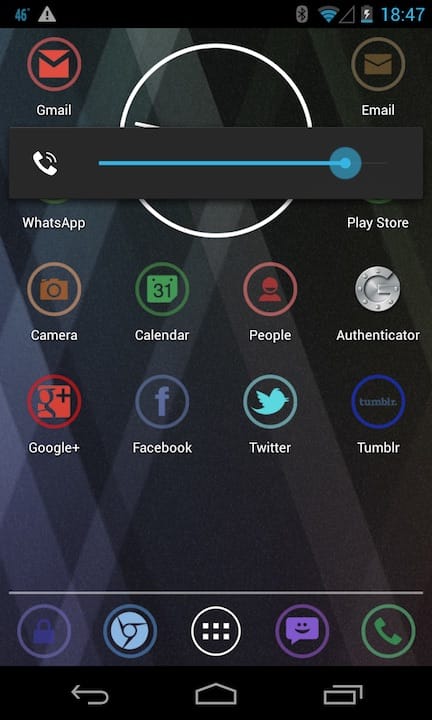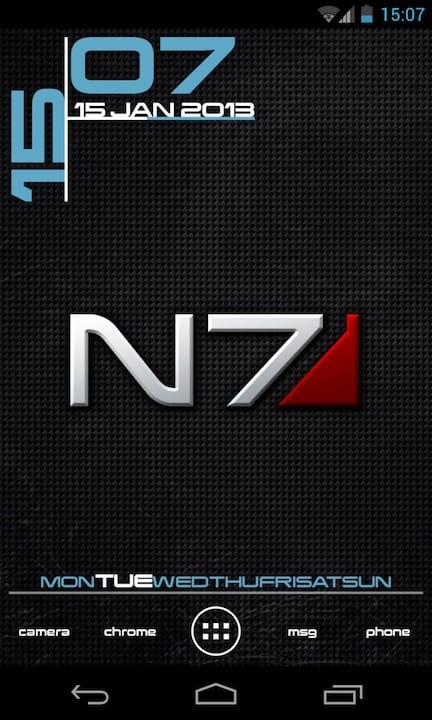Switching to Android: Confessions of an iPhone user
I have recently switched to Android from iOS, or more specifically from iPhone 4 to Nexus 4. Truth be told it’s not been the smoothest of transitions and there have been times I’ve considered retuning the Nexus, but I’m determined to stick with it and I’ve decided to chronicle my journey here, this is my story so far.
I was, and still am, pretty deeply ingrained into the Apple ecosystem: I own an iPhone 4, iPad and Macbook Pro all of which I love and I have invested more than a few pennys in the App Store. Yet despite all this the iPhone 5 didn’t really appeal, at least not for the asking price; it just didn’t seem like much of an upgrade to me. Then the Google Nexus 4 started getting rave reviews from almost every corner of the internet (you can find one of the more balanced and well reasoned reviews over on Ars Technica). Many such reviews were making claims about how Android had now not only caught up with iOS but had actually surpassed it, and best of all it was being sold for less than half the price of the equivalent iPhone 5. So, long story short, I decided to give the Nexus 4 and Android a try.
Hardware
I’ll start with the hardware; I was unlucky enough to receive a faulty unit. My original Nexus 4 suffered from a prominent dead pixel so I contacted Google who had me send it back for a replacement. The Google Play returns system is a little unusual: You have to order a new unit and they pre-authorise your card for the full cost but don’t take for it, at least not yet. When you receive the new unit you pack up and send back the old unit with the return details they’ve provided (in the UK this is done via TNT). When Google (LG to be precise in the case of the Nexus 4) receive your return they inspect it and if they decide it’s worthy of a warranty replacement they don’t charge your card. If on the other hand they decide it’s not covered under warranty then they will charge you for the new unit they sent. This is a slight over simplification but should give you an idea of what the returns procedure is like.
So now I have a fully functional unit, which I hope will remain that way. Although I’m currently awaiting the results of their ‘inspection’ with a little trepidation; from experience with other companies I know the lengths some will go to in order to avoid replacing faulty products, and LG don’t have the best of reputations for service. However, ultimately this is Google’s baby and they did tell me to send it back, so I probably have nothing to worry about; I hope…
The phone itself is very pleasing to the eyes; it’s quick too, very quick. My only real complaint would be that it seems to lose the mobile network connection a little more readily than my old iPhone 4 did and the battery doesn’t seem to last as long. Though in the case of the battery that may well improve as I get more familiar with Android and start turning off things I don’t need. I do have one other complaint: The fact I can’t get an official ‘bumper’ case, due to the Google Play store having sold out, so I’ve had to make do with a much less sexy 3rd party case.
But enough about that, it’s the software that really makes or breaks a smart phone these days.
Software
Ahhh the software, iOS vs Android. The cause of many long and bloody fanboy battles on teh interwebs. Even after spending a good few weeks tinkering around with Android I’m still not sure which I prefer; I’m not even sure whether I can live with Android. Why you may ask? Well it’s exactly what I’ve just mentioned, the tinkering. Android is so flexible, so configurable, so free that I’ve found myself constantly tweaking in order to get the phone set-up in a way I’m happy with.
All this flexibility sounds great doesn’t it, so what’s the problem? The problem is that, because there are no hard and fast rules for app developers, there are massive inconsistencies in the interface. Notifications in particular are a mess, with options all over the place and I’m still not happy with the way they’re set-up. Conversely the extra freedom afforded by Android has led to some rather useful cross-app integration, which is very restricted in iOS. Best of all you can change which apps handle what, so no more being stuck with Safari opening all your hyperlinks. There are multiple app stores to choose from (at the moment I’m using Google Play and Amazon) this choice should breed competition, which can only be a good thing. Google Play also has an excellent feature which means I can install apps from pretty much anywhere, all I need is a browser and internet access. While iOS sort of does this with Automatic Downloads, it’s not quite as slick because you still need to do it via the App Store in iTunes or on an iDevice.
In contrast to Android, iOS has a very consistent interface and needed very little tinker time to get into a workable state. I got the phone, entered my details, installed a few apps and that was pretty much it. Finished in no time at all, ready to take on the world. That is the advantage of Apple’s so called ‘walled garden’; of course you lose the freedom but you gain so much in terms of time, and my spare time is incredibly valuable to me. Other than the aforementioned inter-app integration iOS feels more cohesive, more consistent, easier to use. Then there’s the App Store, it’s a much easier place to find what you’re looking for than the Android alternatives. Unlike it’s Android counterparts it’s heavily curated which leads to a much cleaner and less risky experience. I think that’s what many of Apple’s detractors don’t realise; I can buy an iPhone and just get on with my life, I can’t do that with Android. Sure they’re expensive but I don’t dare sit down and calculate how many hours I’ve already lost to Android and time is money. Having said that you can’t do this with iOS:

This is my first attempt at turning Android in to something I cannot just live with but love; it didn’t stay like that for long. Sure it looks ok, but I thought I could do better.

This is my current homescreen, a Mass Effect style homescreen. I think these two screenshots highlight quite nicely the sheer level of customisation possible with Android. However, they are the fruit of an awful lot of tinkering. Is it worth it? Time will tell. For now I think it looks great but it’s still not perfect, I’ll probably post about how I did it in a future instalment of ‘Confessions of an iPhone user’.
Android or iOS
I’m still not sure which I prefer, they both have their advantages. Given time and enough tinkering I feel sure that Android will come to be my favoured system because of the sheer level of customisation possible, but is it worth all the extra time and effort? I’m not so sure…
